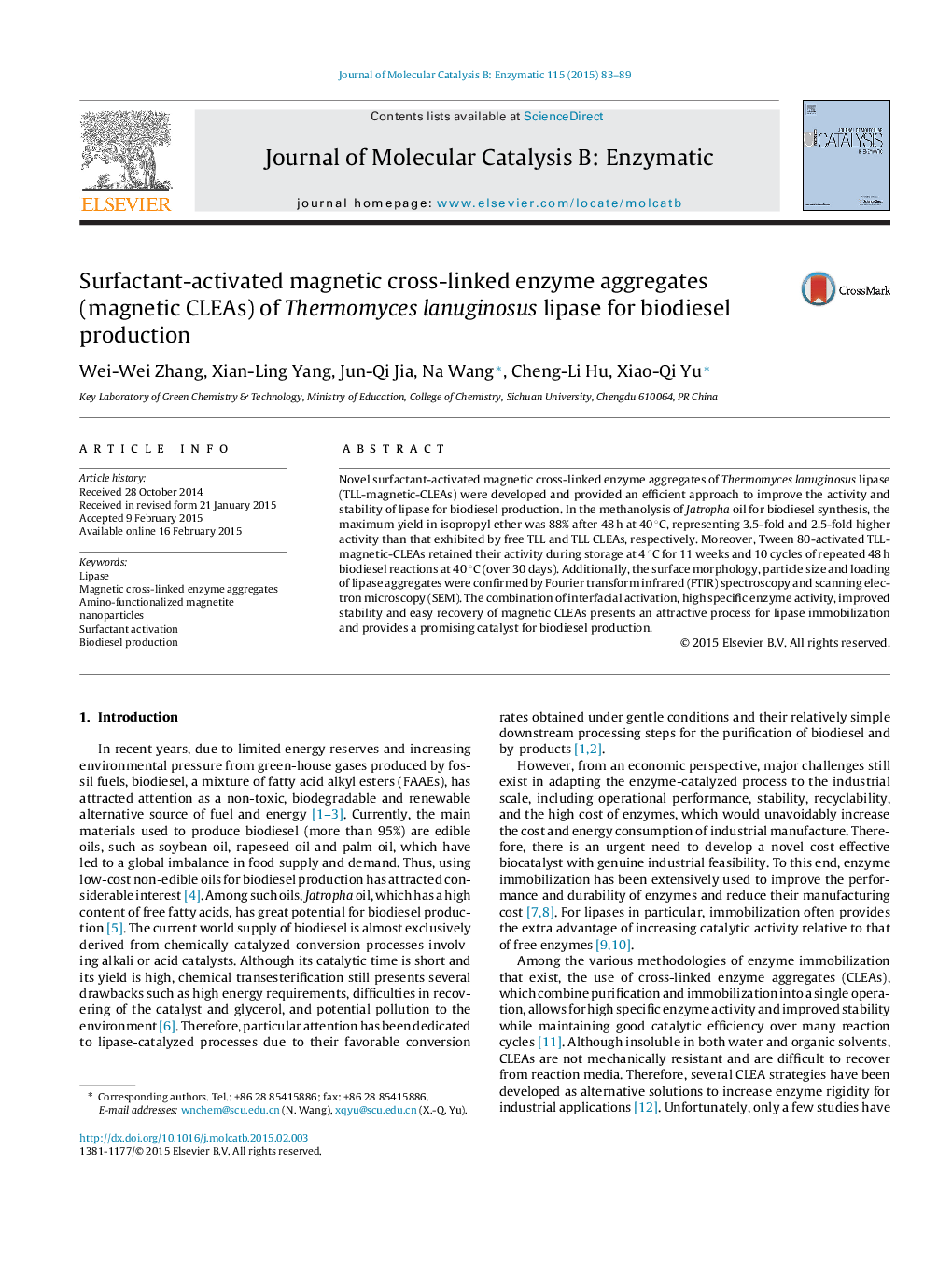| Article ID | Journal | Published Year | Pages | File Type |
|---|---|---|---|---|
| 69556 | Journal of Molecular Catalysis B: Enzymatic | 2015 | 7 Pages |
•Novel biocompatible surfactant-activated magnetic lipase CLEAs were developed.•Surfactant-activated magnetic CLEAs were applied in continuous biodiesel production.•Tween 80-activated magnetic CLEAs exhibited superior storage stability.•Good activity recovery was observed after 10 runs of biodiesel production.•No need to control the water content in biodiesel production.
Novel surfactant-activated magnetic cross-linked enzyme aggregates of Thermomyces lanuginosus lipase (TLL-magnetic-CLEAs) were developed and provided an efficient approach to improve the activity and stability of lipase for biodiesel production. In the methanolysis of Jatropha oil for biodiesel synthesis, the maximum yield in isopropyl ether was 88% after 48 h at 40 °C, representing 3.5-fold and 2.5-fold higher activity than that exhibited by free TLL and TLL CLEAs, respectively. Moreover, Tween 80-activated TLL-magnetic-CLEAs retained their activity during storage at 4 °C for 11 weeks and 10 cycles of repeated 48 h biodiesel reactions at 40 °C (over 30 days). Additionally, the surface morphology, particle size and loading of lipase aggregates were confirmed by Fourier transform infrared (FTIR) spectroscopy and scanning electron microscopy (SEM). The combination of interfacial activation, high specific enzyme activity, improved stability and easy recovery of magnetic CLEAs presents an attractive process for lipase immobilization and provides a promising catalyst for biodiesel production.
Graphical abstractFigure optionsDownload full-size imageDownload as PowerPoint slide
